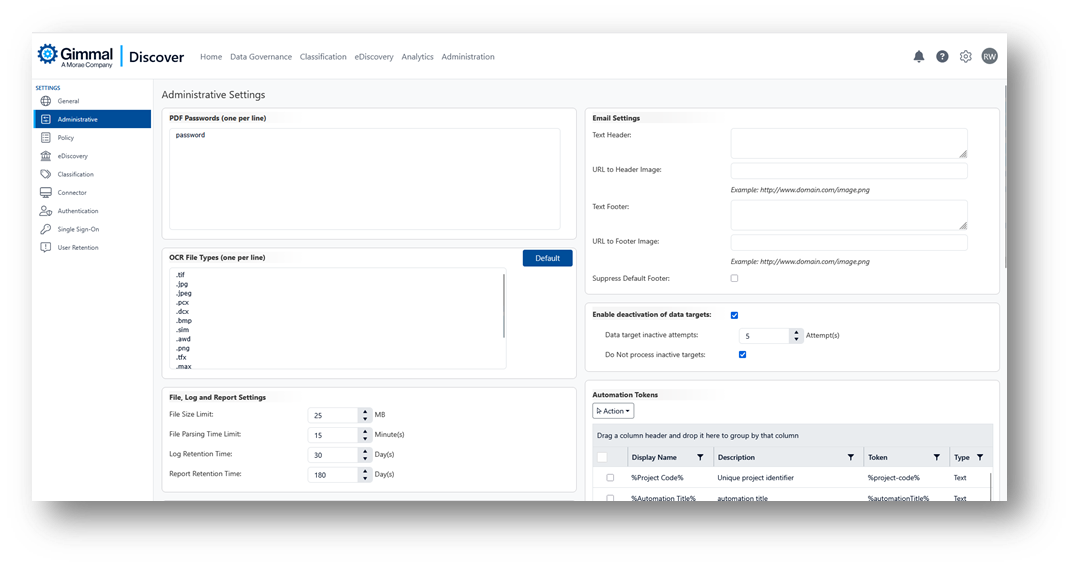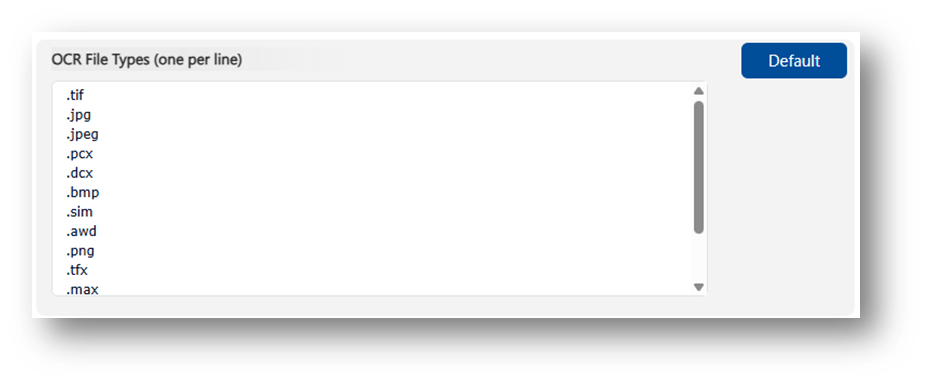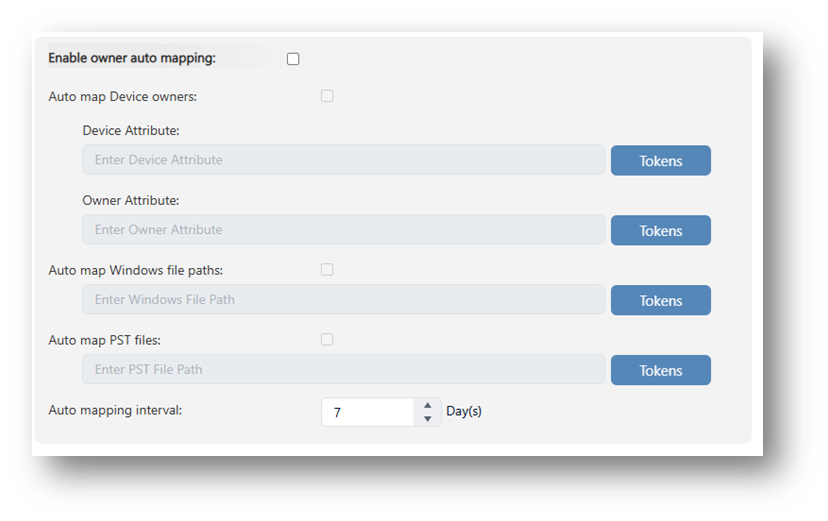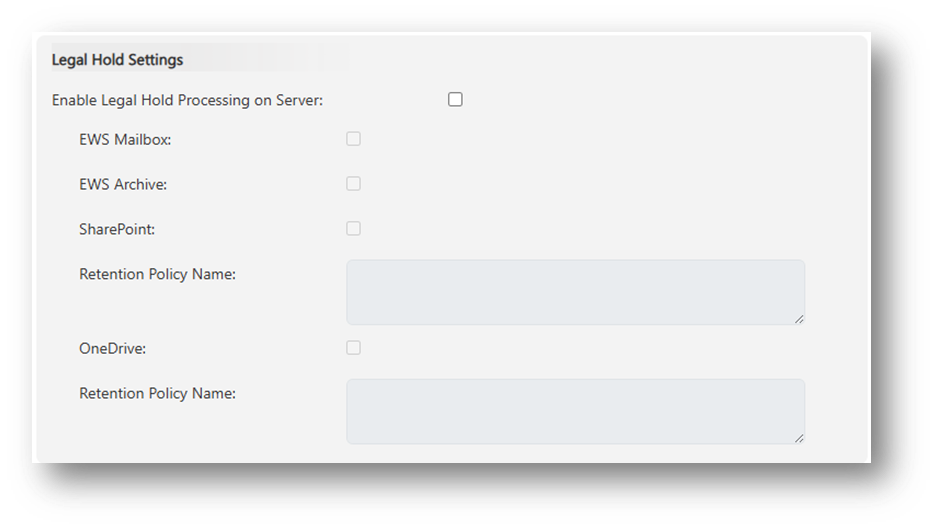Administrative Settings

This page includes several sections, each of which is described in detail below.
PDF Passwords
It is not uncommon for PDF documents to be password-protected. This page allows you to create a list of possible passwords to try when the Discover attempts to access a protected PDF file.

OCR File Types
The Discover Windows File Agent offers the ability to process image-based files using Optical Character Recognition (OCR) to attempt to extract text from the image. This setting allows Discover administrators to specify which file types are eligible for OCR processing. Clicking the Default button will pre-populate the box with known image-based file types.

File, Log & Report Settings
These settings control two distinct aspects of Discover. The File Size and Parsing Time Limit can prevent the Windows File Agent from spending an undue amount of time examining large files. If the Agent encounters a file that exceeds the size limit, that file will automatically be bypassed. Likewise, if a file exceeds the parsing time limit, the Agent will skip that file and move on to the next.

The Log and Report retention settings determine how long those items will remain in a customer’s Discover database before automatically being purged.
Extended Attributes
Clients may want to include extended information from their Entra/Active Directory in Gimmal Discover. This area allows those attributes to be defined. For example, the screenshot below shows an entry for the value CO, which creates a column in the Discover database where a user’s country designator can be stored.

Enable Owner Auto Mapping
Owner mapping is a process that attempts to automatically associate a Discover data target (i.e., mailbox, file share) with a particular Data Owner. These settings allow admins to specify what attribute should be used to make that association. For example, a Data Owner’s last name appears as a home drive on the network.

Email Settings
These settings allow customer-specific branding (images, headers, footers, etc.) to be applied to email messages sent by Discover.

Enable Deactivation of Data Targets
Discover Data Targets may be transient. For example, folders in a network file share may not persist over an extended period. This setting allows Data Targets that have not been found by a Data Target Search to automatically be marked with an inactive status.

Automation Tokens
Discover supports a Data Owner Retention process. Typically, the steps in the retention workflow are triggered by information imported from an external XML file. This screen allows the values that are being imported from the XML file to be defined. When an import occurs, these values are populated and may be used to initiate an activity like a Data Governance Policy.

Legal Hold Settings
Discover may trigger the litigation hold process available in Microsoft 365 to preserve data. The settings in this section determine whether that retention integration is enabled and what M365 content is eligible for retention.

As a reminder, if you modify any of these settings, do not forget to click the Save button at the bottom of the page to preserve your selections.
